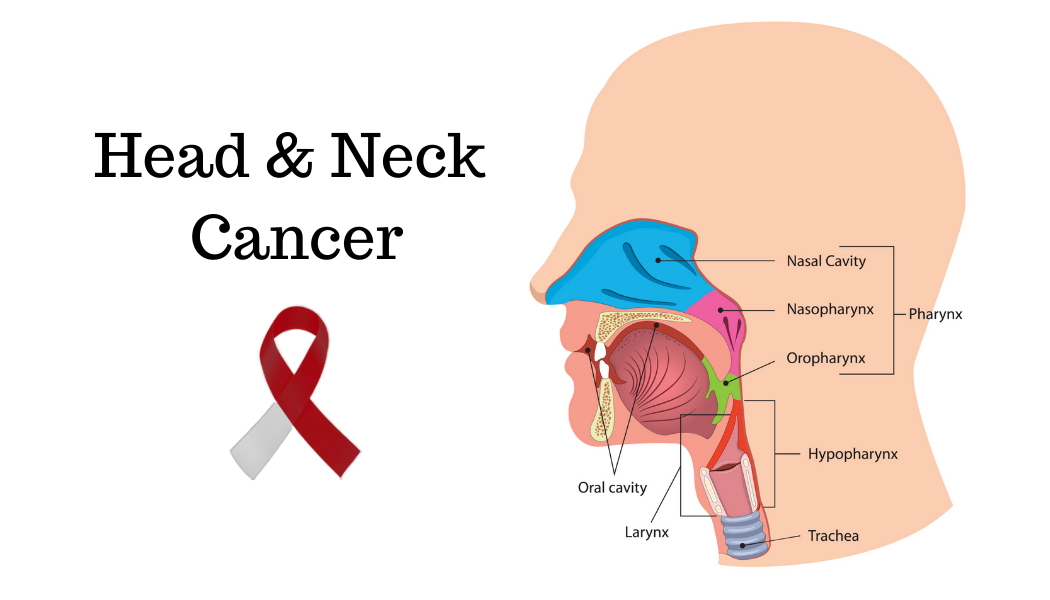April is Head and Neck Cancer Awareness Month
Head and neck cancer is a common disease in several regions of the world. According to the report, head and neck cancer accounts for approximately 900,000 cases and over 400,000 deaths annually. In the United States, head and neck cancer accounts for 3 percent of malignancies, with approximately 66,000 cases annually and 15,000 deaths. In Europe, there were approximately 250,000 cases (an estimated 4 percent of the cancer incidence) and 63,500 deaths in 2012.
Head and neck cancers include cancers in the following areas:
- Hypopharynx (hypopharyngeal cancer)
- Larynx (laryngeal cancer)
- Nasal cavity (including nasopharyngeal cancer)
- Oral cavity (including lip cancer and tongue cancer)
- Pharynx (pharyngeal cancer)
- Salivary glands
- Sinuses (paranasal sinus cancer)

These cancers are often accompanied by symptoms that are uncomfortable and disruptive to everyday life, such as difficulty chewing, swallowing, breathing, or moving one’s jaw. Luckily, many cases of head and neck cancer are preventable and current treatment can often remove the tumor without many complications.
The primary risk factors associated with head and neck cancer include tobacco, alcohol , human papillomavirus (HPV) infection (for oropharyngeal cancer), and Epstein-Barr virus (EBV) infection (for nasopharyngeal cancer). The chronic exposure of the upper aerodigestive tract to these carcinogenic factors can result in dysplastic or premalignant lesions in the oropharyngeal mucosa and ultimately result in head and neck cancer.
Other risk factors for these Head and neck cancers include:
- Eating preserved or salted foods.
- Poor oral hygiene.
- Occupational exposure to harmful dust, asbestos, and synthetic fibers.
- Radiation exposure.
- Epstein-Barr virus infection.
- Hereditary factor, particularly in Chinese.
Prevention
The majority of head and neck cancer cases are preventable with certain lifestyle modifications. Some risk factors, such as gender and age, are uncontrollable but work in conjunction with modifiable risk factors. Men, for example, are two to three times more likely than women to develop head and neck cancer. It is also more common to see such cancers in people over the age of 40. To greatly reduce the chances of developing head and neck cancer, individuals should consider:
1.Refusing smoke
Like many health-related concerns, quitting or reducing smoke can greatly reduce one’s risk of developing head and neck cancer.
2. Reducing alcohol consumption
Frequent and heavy alcohol consumption is a major risk factor associated with head and neck cancer.
3. Minimizing sun exposure and be UV smart
Skin cancer and cancer around the lip area are most often caused by ultraviolet (UV) exposure from the sun.
4. Practicing safe sex
Research shows that the human papillomavirus, or HPV, is also a risk factor for head and neck cancer. HPV is a sexually transmitted infection that can cause both cervical cancer and head and neck cancer.Experts recommend that individuals practice safe sex, including oral sex.
Detection and Treatment
Most types of head and neck cancers can be cured, especially if found early enough. Regular health appointments provide medical professionals the opportunity to monitor for any abnormalities in the head and neck region. The most common symptom of head and neck cancer is swelling or a sore that does not heal. If someone at an increased risk of head and neck cancer experiences this, or any other persistent and unusual discomforts in the head and neck region, they should consult their doctor immediately.


The most common form of treatment for head and neck cancer is surgery. During surgery, the goal is to remove the cancerous tumor and some surrounding healthy tissue without impacting function. Like many cancers, it is sometimes impossible to completely remove the tumor. In cases such as this, surgeries may be paired with radiation therapy or chemotherapy.

